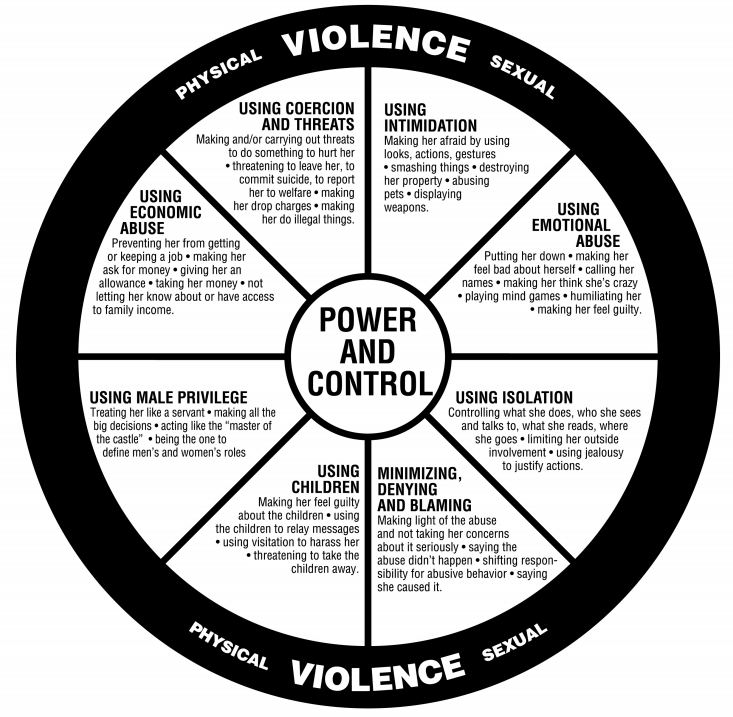Signs of Domestic Violence
Abuse may begin with behaviors that are easily dismissed or downplayed, such as name-calling, threats, possessiveness, or distrust. Over time, the abuse can escalate as a means of keeping control. Some examples of abusive tendencies include, but are not limited to:
- Telling the victim that they can never do anything right
- Showing jealousy of the victim’s family and friends and time spent away
- Accusing the victim of cheating
- Keeping or discouraging the victim from seeing friends or family members
- Embarrassing or shaming the victim with put-downs
- Controlling every penny spent in the household
- Taking the victim’s money or refusing to give them money for expenses
- Looking at or acting in ways that scare the person they are abusing
- Controlling who the victim sees, where they go, or what they do
- Dictating how the victim dresses, wears their hair, etc.
- Stalking the victim or monitoring their victim’s every move (in person or also via the internet and/or other devices such as GPS tracking or the victim’s phone)
- Preventing the victim from making their own decisions
- Telling the victim that they are a bad parent or threatening to hurt, kill, or take away their children
- Threatening to hurt or kill the victim’s friends, loved ones, or pets
- Intimidating the victim with guns, knives, or other weapons
- Pressuring the victim to have sex when they don’t want to or to do things sexually they are not comfortable with
- Forcing sex with others
- Refusing to use protection when having sex or sabotaging birth control
- Pressuring or forcing the victim to use drugs or alcohol
- Preventing the victim from working or attending school, harassing the victim at either, keeping their victim up all night so they perform badly at their job or in school
- Destroying the victim’s property

Power & Control Wheel
In 1984, staff at the Domestic Abuse Intervention Project (DAIP) began developing curricula for groups for men who batter and victims of domestic violence. We wanted a way to describe battering for victims, offenders, practitioners in the criminal justice system and the general public. Over several months, we convened focus groups of women who had been battered. We listened to heart-wrenching stories of violence, terror and survival. After listening to these stories and asking questions, we documented the most common abusive behaviors or tactics that were used against these women. The tactics chosen for the wheel were those that were most universally experienced by battered women.
Source: theduluthmodel.org/wheels/
